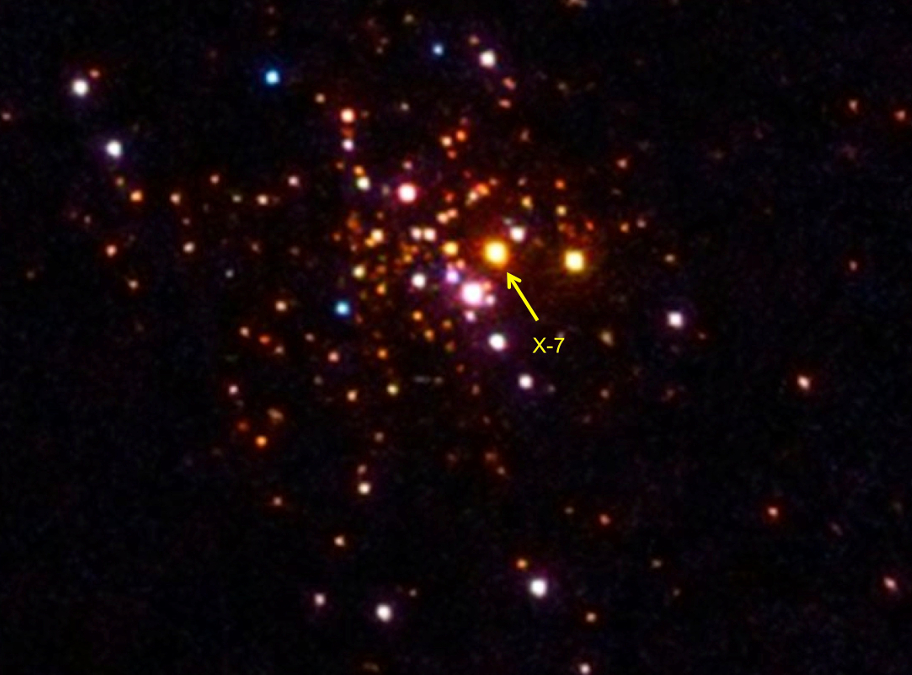
 Credit: NASA/CXC/Michigan State/A.Steiner et al
Credit: NASA/CXC/Michigan State/A.Steiner et al
The EOS
Neutron stars are nature's way of telling us how matter exists at extreme densities, densities so high that they are impossible to reproduce on earth (at least outside of an atomic nucleus). Neutron stars are produced in the fiery end-of-life of a star of more than about 8 solar masses, in which the very core of the star itself is crushed dead into a ball which could fit comfortably inside the Washington DC beltway. It would seem impossible to study an object so small at distances of hundreds or even thousands of lightyears, but neutron stars have ways of signalling their presence: bright high-energy X-ray emission, and strong magnetic fields producing high frequency pulsations. By determining the masses and radii of neutron stars, astrophysicists can constrain the so-called "equation of state", which in turn determines what kind of matter exists at the enormously high central densities - pure neutron matter, strange atomic subspecies, perhaps even free-floating quarks. A new study of 8 different neutron stars (like the one called X-7 in the Chandra X-ray image of a globular cluster called 47 Tucanae) by the Chandra, XMM-Newton and Rossi X-ray Timing Explorer X-ray telescopes has allowed scientists to put limits on the density structure inside a neutron star. This study suggests that the density within a "normal" neutron star may be up to eight times the density of a normal atomic nucleus.
Published: March 11, 2013
<
HEA Dictionary ● Archive
● Search HEAPOW
● Other Languages
● HEAPOW on Facebook
● Download all Images
● Education ● HEAD
>

Each week the HEASARC
brings you new, exciting and beautiful images from X-ray and Gamma ray
astronomy. Check back each week and be sure to check out the HEAPOW archive!
Page Author: Dr. Michael F. Corcoran
Last modified Monday, 26-Feb-2024 17:20:04 EST


